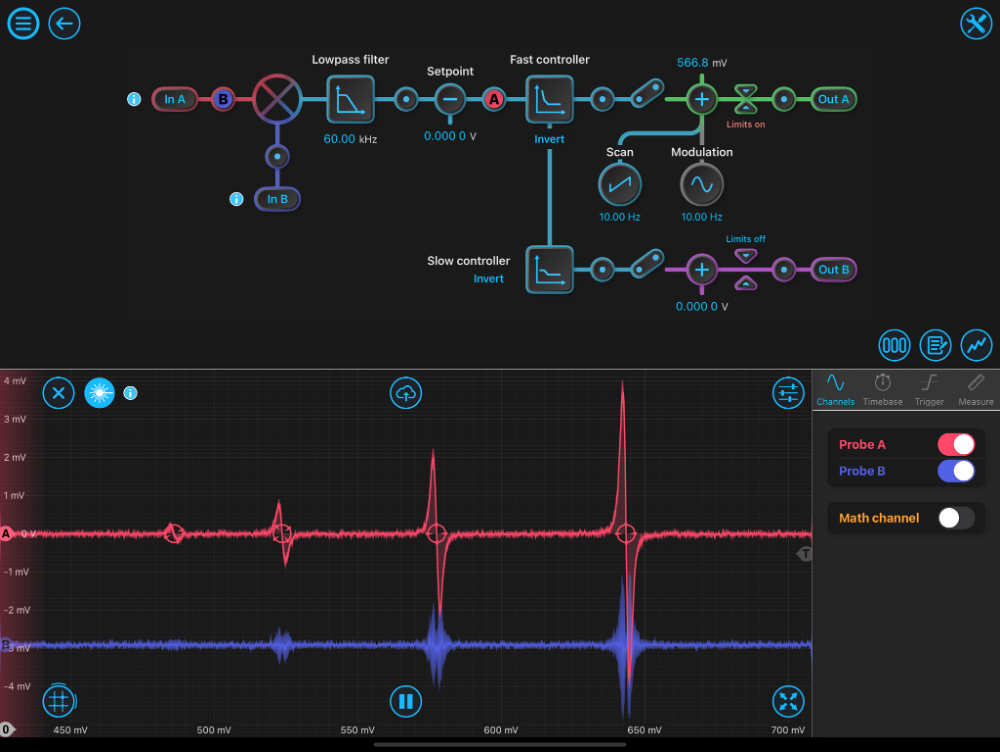Introduction
Humboldt University of Berlin is a prestigious public institution in Germany with a long history of supporting leading-edge scientific research. The university is linked to countless major breakthroughs in physics, and its impressive roster of faculty alumni includes none other than Albert Einstein.
Julien Kluge, a Ph.D. candidate in the Joint Lab Integrated Quantum sensors (www.iqs.berlin) is working to expand the university’s legacy of groundbreaking research. Julien is developing time and frequency references, also known as optical clocks. He is collaborating closely with the world-renowned Ferdinand- Braun-Institut, an application-oriented research center also located in Berlin, which develops and provides the laser light sources with the required specific properties. Within a research project funded by the German Space Agency (DLR), Julien hopes to create mobile optical clocks for space applications and the global navigation satellite system (GNSS) for global positioning services. The development of stable, mobile optical clocks opens exciting new opportunities to advance navigation in space while supporting critical terrestrial applications like telecommunications.
To perform this pioneering research, Julien leverages the power and flexibility of Moku:Pro (Figure 1). This advanced, FPGA-based test device delivers more than 15 software-defined instruments — ranging from common bench necessities to unique, essential instruments — to streamline even the most highly experimental lab setups. Using two Moku:Pro devices equipped with the Laser Lock Box, Digital Filter Box, Lock-in Amplifier, and PID Controller instruments, Julien has advanced his research by employing precision instrumentation in various stabilization setups.

Figure 1: Moku:Pro device with the Lock-in Amplifier instrument display
The challenge
At first, Julien and his team employed analog, home-built locking electronics, a common method of laser locking. While this approach can be effective, it is susceptible to a myriad of complications that make progress difficult. For example, if the temperature in the lab varied even slightly, the clock signal would change, disturbing the lock.
Additionally, the analog systems were complicated to configure and difficult to tune. The precise setup cost the team precious time as their numerous tests could not be automated. All the calculated, meticulous testing had to be done by hand — a tedious process that required extensive manual intervention. If they wanted to perform repeated testing, the team had to set up the experiment over and over again while personally recording the data.
The solution
After switching from manual methods to Moku:Pro, Julien and his team achieved significant time savings and accelerated their research thanks to their new ability to seamlessly and accurately automate tests and log data. Moku:Pro digitally demodulated the signals and generated the correct frequency sidebands with no issues regarding the temperature set point. Best of all, everything is now controlled by a convenient, transportable iPad.
Additionally, after an entire year of troubleshooting with manual methods, Julien and his team could not determine the best way to improve their clock stability. Once they discovered that the issue was DC noise in the analog components, switching to Moku:Pro within its digital signal chain completely solved the problem — plus, it improved temperature-related issues. They changed their analog setup to instead enable Moku:Pro instruments in Multi-Instrument Mode (Figure 2). They first utilized the Digital Filter Box instrument to filter out noise from the optical clocks, then fed the signals into two Laser Lock Box instruments (Figure 3) in order to generate stable signals.

Figure 2: Moku:Pro Multi-Instrument Mode setup of the laser stabilization system

Figure 3: Moku:Pro Laser Lock Box setup showing the digitally demodulated response of the atomic clock transitions
After switching to Moku:Pro, Julien’s group became much more efficient because they could programmatically access Moku instruments through APIs to reduce repetitive manual testing. They utilized Python to control Moku:Pro, automate tests, and fully interface with the software-defined instrumentation. With Multi-Instrument Mode, the team automated an entire test setup rather than a single instrument.
“Multi-Instrument Mode gives us the flexibility we really need,” Julien said. “We don’t have to fiddle around with the cables anymore!”
After introducing the Moku:Pro Lock-in Amplifier and PID Controller instruments in Multi-Instrument Mode, Julien noted an order of magnitude of improvement in system stability. The team also used the Moku:Pro Waveform Generator to generate precise modulation frequencies. This technique allows Julien to perform frequency modulation spectroscopy, also referred to as two-photon spectroscopy, to further his experiments.
The result
Since Moku:Pro contains a highly accurate and efficient stabilizer that is resistant to temperature changes, it fixed Julien’s primary yearlong issue in a matter of seconds. Additionally, the team appreciated the option to control Moku:Pro with an iPad. They could conveniently move anywhere in the lab to record data, freeing them from their lab benches to observe experiments and view test results.
“Moku is exactly what we wanted,” Julien said.
Julien plans to continue using Moku:Pro to advance his experiment, with one device continuously performing frequency stabilization and another floating unit so lab members can analyze noise with instruments such as the Digital Filter Box, Lock-in Amplifier, and Spectrum Analyzer in Multi-Instrument Mode.
Considering the success of their current experiments and the cost-effectiveness and versatile instruments offered by the Moku platform, the lab aims to buy a third Moku:Pro to focus on residual amplitude modulation stabilization. This will satisfy their need for two PID Controllers and two Lock-in Amplifiers to continue their research, with the goal of transforming optical clocks used in both deep space and here at home.
To learn more about Julien and his team’s research, click here. Have questions? Reach out to us here. Located in Europe? Find more information from SI Scientific Instruments GmbH here.






